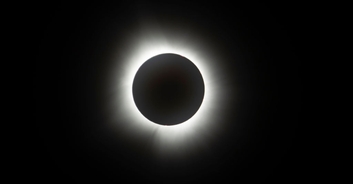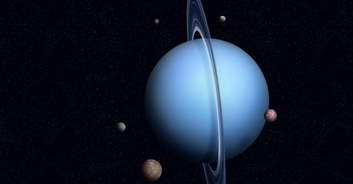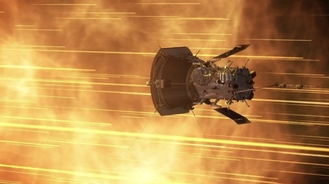It's fair to say that most of us take the sun for granted, and it's no exaggeration to say that were it not for that giant burning ball of gas out there in space, life on this planet literally could not exist.
Of course, we all know that actually looking at the sun is damn near impossible and blinding, but now a team of scientists working at the Inouye Solar Telescope in Hawaii has harnessed their state-of-the-art technology to reveal the most detailed pictures of the surface sun ever taken.
The images were shared on the official Facebook page of the US National Science Foundation, the images show what looks like a flat display of golden yellow popcorn kernels. Yet each of these 'kernels' represents a colossal nuclear explosion, with each 6000-celsius bubble of super-hot plasma measuring roughly the same size as the state of Texas.
Commenting on the stunning pictures in the Facebook caption, the National Science Foundation's director France Córdova stated: "NSF’s Inouye Solar Telescope will be able to map the magnetic fields within the sun’s corona, where solar eruptions occur that can impact life on Earth. This telescope will improve our understanding of what drives space weather and ultimately help forecasters better predict solar storms."
The video above was shared to Facebook by the National Solar Observatory, along with the caption: "Our star, in action, doing what it does."
In another post, they wrote: "The National Science Foundation (NSF)'s Inouye Solar Telescope images the sun in more detail than we’ve ever seen before. The telescope can image a region of the Sun 38,000km wide. Close up, these images show large cell-like structures hundreds of kilometers across and, for the first time, the smallest features ever seen on the solar surface, some as small as 30km."
Per British tabloid newspaper The Sun, the NSF researchers apparently aim to use the Inouye telescope to investigate solar storms; vast eruptions that can disrupt electronics on Earth and lead to profound meteorological changes.
To better understand the workings of our local star, NSF intends to measure the magnetic field strength and direction of the bubbles on the sun's surface. They will then try to trace the field as it extends out into the million-degree corona, the outer atmosphere of the Sun.
Take a look at this gorgeous footage of a tiny Hunter's Moon rising over the horizon:But this isn't the first exciting space news we've covered lately. Check out this article we penned all about the giant star 1,400 times bigger than our own sun, which astronomers predict is about the explode.

.jpg_dOahs3?tr=h-184)


.webp_k3JJBL?tr=h-184)
